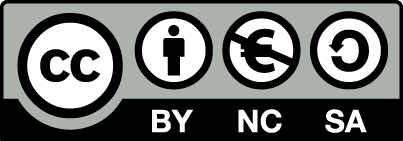Please use this identifier to cite or link to this item:
https://hdl.handle.net/10419/224312 Title (translated):
La transición europea a un modelo de producción de energía verde: Esquema italiano de tarifas y estudio de caso de mini parques eólicos de Trentino Alto
Year of Publication:
2020
Citation:
[Journal:] Small Business International Review (SBIR) [ISSN:] 2531-0046 [Volume:] 4 [Issue:] 2 [Publisher:] Spanish Accounting and Business Administration Association (AECA) and Universidad Politécnica de Cartagena (UPCT) [Place:] Madrid and Cartagena [Year:] 2020 [Pages:] 39-52
Publisher:
Spanish Accounting and Business Administration Association (AECA) and Universidad Politécnica de Cartagena (UPCT), Madrid and Cartagena
Abstract:
The Europe 2020 Strategy is aimed at making the EU into a smart, sustainable and inclusive economy by 2020. This Strategy has to promote environmental policies and economic opportunities. Back in 2007 Italy was performing slightly below average and way below the most advanced EU Member States as far as percentage of green energy of the total energy produced in Italy. Measures were taken and though the Italian regulation around green energies has been hectic though effective. Italian legislation recently passed will put emphasis on the relevance of a Green Power strategy by guarantying an attractive minimum price per Kw produced through clean and environmental friendly sources, notably from Wind energy sources. Within the sector a new area is grafting attention: the mini wind farms. The Trentino Alto Adige region in Northern Italy has taken particularly profit of the national legal framework and has develop a further regional frame that has placed the region on top of the Italian green energy production charts. The local idiosyncrasy is making of the mini wind farms a case study.
Abstract (Translated):
La Estrategia Europa 2020 tiene como objetivo convertir a la UE en una economía inteligente, sostenible e integradora para 2020. Esta estrategia ha de generar políticas medioambientales y oportunidades económicas. Hacia 2007, Italia se comportaba ligeramente por debajo del promedio y muy por debajo de los Estados miembros más avanzados de la UE en la producción de energía verde como porcentaje de la energía total producida en Italia. Se tomaron medidas y, aunque la regulación italiana en torno a las energías verdes ha sido voluble, sí ha resultado efectiva. La legislación italiana recientemente aprobada pone énfasis en la relevancia de una estrategia de energía verde al garantizar un precio mínimo atractivo por Kw producido a través de fuentes limpias y amigables con el medio ambiente, especialmente de fuentes de energía eólica. Dentro del sector, una nueva área que está atrayendo atención son los mini parques eólicos. La región de Trentino Alto Adige en el norte de Italia se ha beneficiado particularmente del marco regulatorio nacional y ha desarrollado un nuevo marco local, que ha colocado a la región en la cima de las listas italianas de producción de energía verde. La idiosincrasia local está haciendo de los mini parques eólicos un caso de estudio.
Subjects:
energy transition
green energy
Europe 2020
wind energy
mini wind farms
transición energética
energía verde
Europa 2020
energía eólica
mini parques eólicos
green energy
Europe 2020
wind energy
mini wind farms
transición energética
energía verde
Europa 2020
energía eólica
mini parques eólicos
JEL:
F53
G14
K23
O32
G14
K23
O32
Persistent Identifier of the first edition:
Document Type:
Article
Files in This Item:
File
Description
Size
Format
Items in EconStor are protected by copyright, with all rights reserved, unless otherwise indicated.

